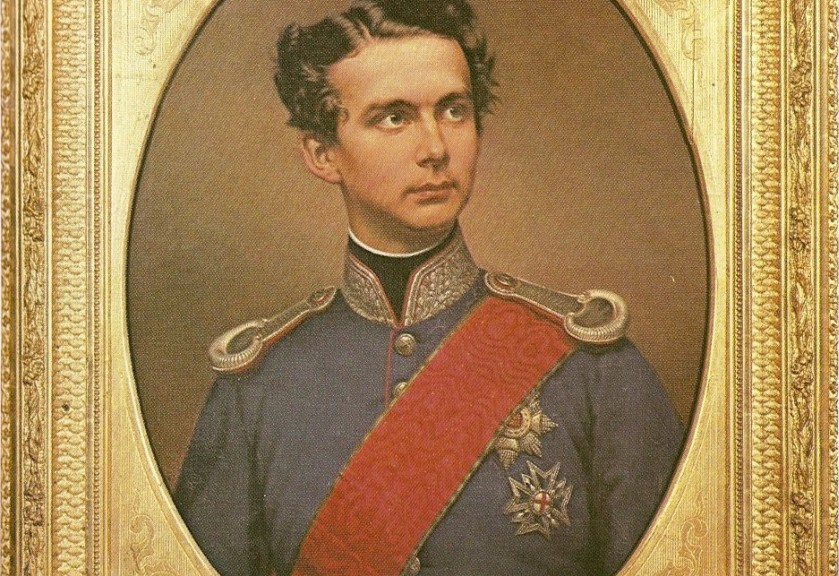King Ludwig II of Bavaria, a Beautiful Madness
Wonderful Atlantic Monthly Photo Essay on Ludwig II
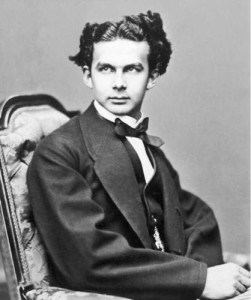
Ludwig II was born on August 25, 1845. His father, Maximillian, was then the Crown Prince of Bavaria. His grandfather, Ludwig I, was the King of Bavaria and a member of the House of Wittlesbach, the ruling dynasty that had governed the Kingdom of Bavaria, for over six hundred years.
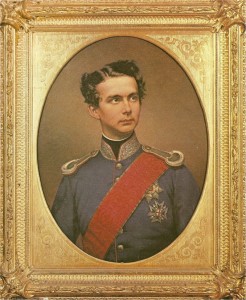
Upon Maximilian’s death, Ludwig became Ludwig II at the age of eighteen. His childhood had not been particularly happy, raised by governesses and without interaction with or affection from either of his parents, he spent much of his time in emotional isolation. He also developed a hostility toward his younger brother Otto, feeling that because he was the heir and expected to reign eventually as the king, he was held to a much higher standard.
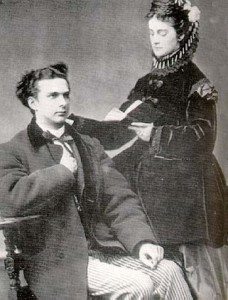
Unfortunately, Ludwig immediately had misgivings and began to realize that moving forward with the marriage would be a disaster. Publicly, he initially attempted to maintain an appropriate veneer of enthusiasm and affection, privately the courtship featured nothing more than an occasional furtive kiss on the brow. Ludwig spent much of the summer arriving at Sophie’s family’s palace at Possenhoven at all hours of the night where the couple would engage in awkward small talk and interact without any real passion. By the end of the summer and the impending August wedding date, Ludwig decided to postpone the event. His explanation was that the wedding would be rescheduled for October 12, the anniversary date of his grandfather, Ludwig I, and father, Max II. But when Ludwig also cancelled the wedding on this date, Sophie’s parents demanded that he either set a permanent date or call it off for good. Ludwig chose to characterize this demand as impertinent and informed Sophie that as a result, the engagement was officially ended.
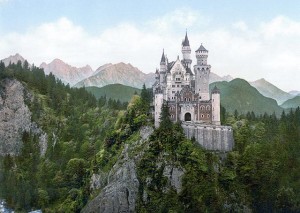
As Ludwig became more isolated from day to day reality, his preoccupation with architecture and building became more prominent. As early as 1868 he had written to Wagner of his desire to build a castle in the style of German folklore, something that might be occupied by one of the heroic figures of a Wagnerian opera. Having thoroughly explored the area surrounding Hohenschwangau, Ludwig selected a dramatic location on a raised plateau known as the Pollat Gorge. Sketches were composed by architects after consultations with Ludwig II about his vision for the building. Construction began in 1869, it would not end until after Ludwig’s death. Initially called New Hohenschwangau Castle it would ultimately be named Neuschwanstein, or “New Swan Stone” Castle.
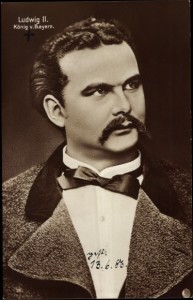
During Ludwig’s lifetime, the public was forbidden to enter the palace grounds. Only servants or an occasional expressly invited visitor were permitted. This was in line with the ever more reclusive life that Ludwig began to pursue in the 1870’s. He spent his days sleeping and nights reading obscure literature frequently from the era of Louis XIV. He commissioned plays and operas to be performed privately in large theaters in Munich for his benefit with no other audience. He would take evening rides in his gilded carriage or sleigh in winter, his footmen dressed in the manner of the court of Louis XIV, the king drawn by white horses that made a spectacular impression on the rural inhabitants of backwoods Bavaria.
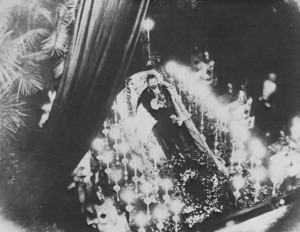
The death of Ludwig II was met by shock and grief throughout Bavaria. The king’s body was conveyed to the capital where it would publically lie in state for three days in the chapel of the Residenz. An immense funeral procession would convey the king to St. Michael’s Church and his burial place in the church crypt, a procession that would take over two and a half hours. The funeral of Ludwig is believed to be the largest state occasion in the history of the city of Munich.
Podcast: Play in new window | Download
Subscribe: RSS

